Curious about what to eat in Bosnia and Herzegovina? Here are 20 dishes from Bosnian cuisine – including traditional Bosnian desserts and drinks – to savour during your visit.
Food is an extremely important part of the culture in Bosnia and Herzegovina, where preparing and sharing food is part of the social fabric. Many meals are steeped in history and tradition, and reflect the mix of cultures that makes BiH so diverse.
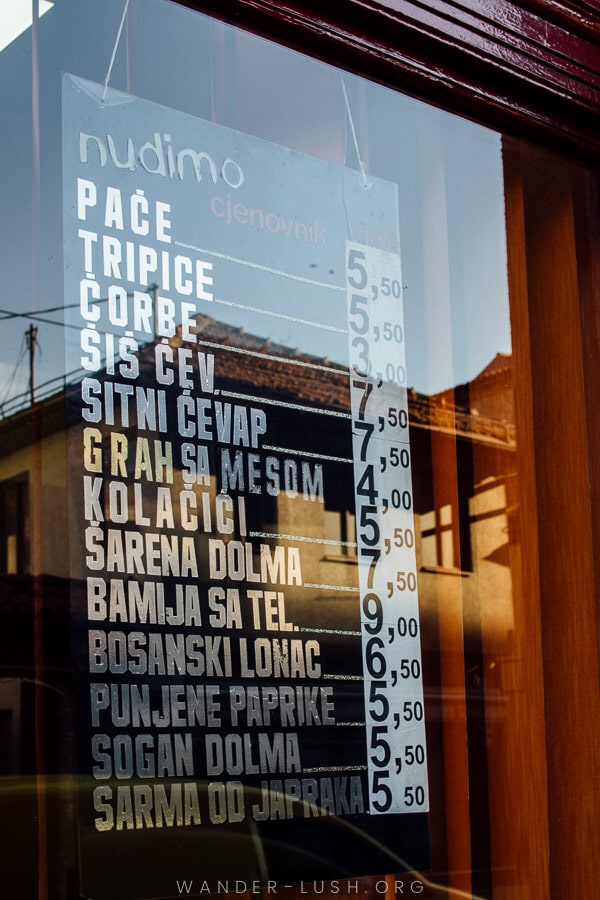
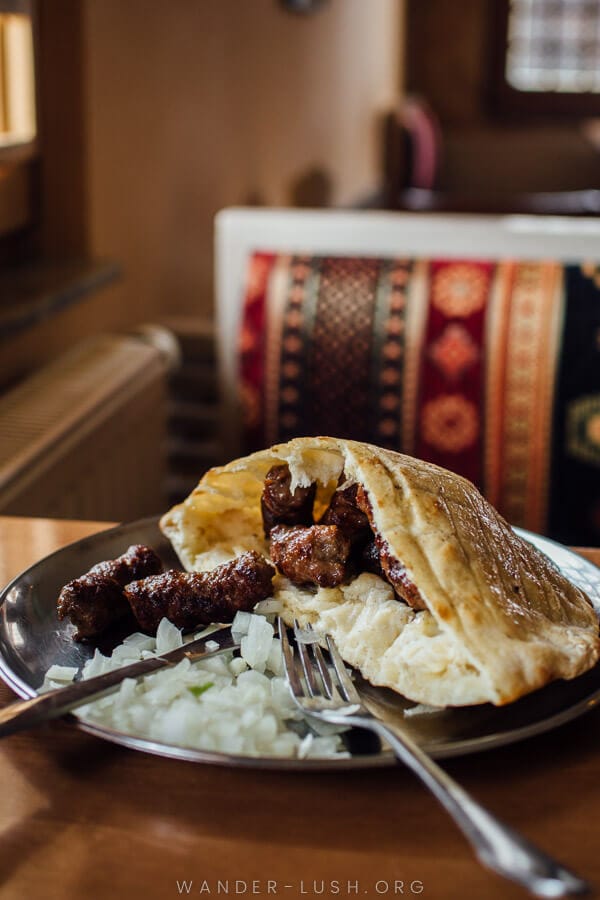
Before my 6-month trip around the Balkans, I must admit that I assumed Bosnian cuisine would be much the same as food in Montenegro, North Macedonia or Albania. I quickly discovered that’s not the case.
If you asked me to name the country in the region with the most delicious food, Bosnia and Herzegovina would definitely be in my top three! I spent a full month in the country and during that time, I ate the most delicious versions of Balkan classics such as burek and cevapi, and devoured a smorgasbord of other dishes particular to the country and its different regions.
This list is the result of my Bosnian food odyssey: 20 best Bosnian foods, desserts and drinks I think every visitor should try.
Please note: This post contains affiliate links, meaning I may earn a commission if you make a purchase by clicking a link (at no extra cost to you). Learn more.
Understanding Bosnian cuisine
First, a few words to put food in Bosnia in context. While the country does share a lot of culinary similarities with its neighbours, I found that the Turkish, Greek and Ottoman influence is much more pronounced here than in, say, Croatia.
A lot of Bosnian dishes are plant-based and seasonal as a result. It’s only really in the cities and tourist centres where you find heapings of meat. Most peoples’ diets revolve around vegetables and beans.
When meat is served, it’s really served – mixed-grill style with all kinds of cuts on the one plate. Normally you see beef and lamb rather than pork, but people who do not follow Islam still consume pork.
Bosnian food is flavoursome but uses spices sparingly. Hearty soups and stews are very popular along with stuffed vegetables, rice-based dishes and of course, beans.
Traditional restaurants called aščinica are often the best place to try national dishes, so look out for this label. Venues that have an open grill and cook their meat and veg over hot coals to order are particularly good. I’ve sprinkled a few of my best Bosnia restaurant recommendations throughout the article.
If you want to learn more about Bosnian culinary culture, I highly recommend signing up for a Sarajevo food tour with Balkantina. You’ll visit a bunch of restaurants, bakeries and two local food markets.
I did the tour at the start of my trip and it gave me a much deeper appreciation for Bosnian food – and it helped me to know what to order during the rest of my travels.
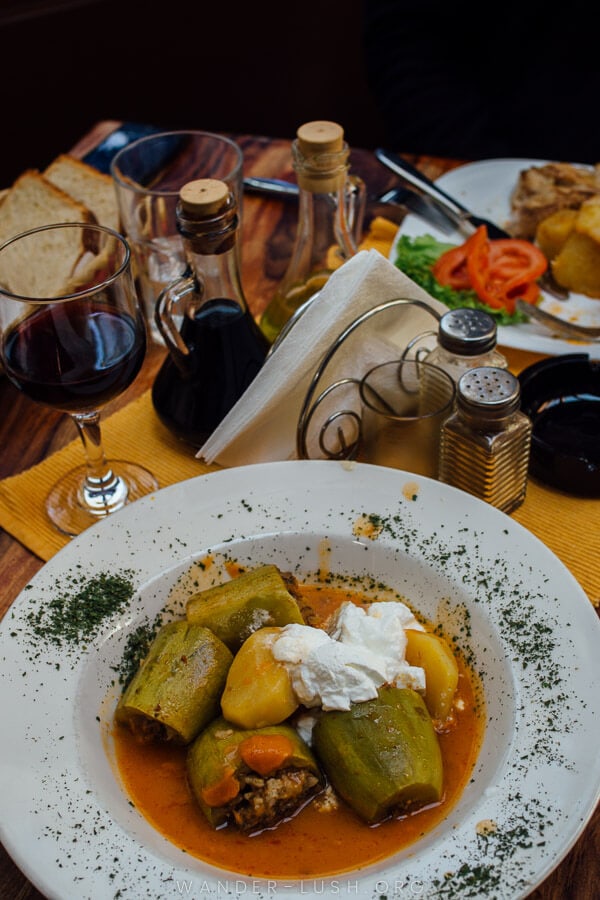
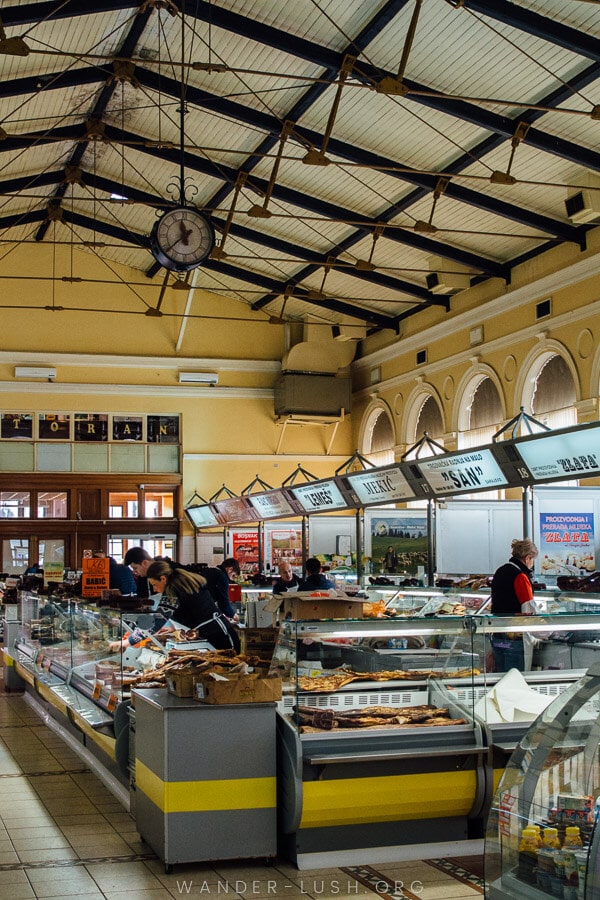
Traditional Bosnian food: Meat & veg dishes
Here are 20 of the best meat and vegetable dishes, desserts and traditional drinks to look out for when you’re eating at restaurants in Bosnia and Herzegovina.
1. Cevapi (grilled mince patties)
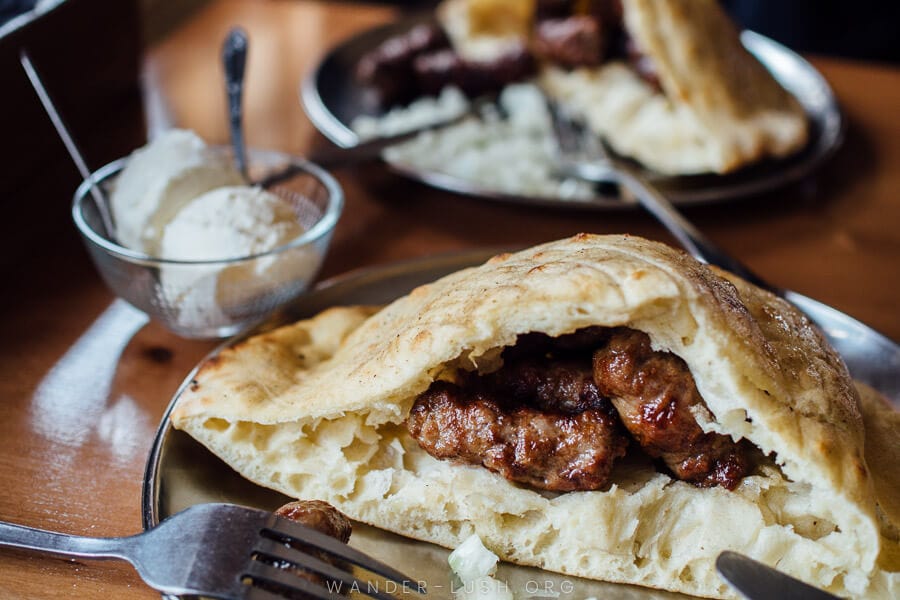
Ćevapi is one of the most-loved foods in Bosnia and the entire region. When I joined a walking tour in Sarajevo, my guide told me that cevapi was one of only two things that all people can agree on and that they should be pictured on the Bosnian flag. The other one was cigarettes!
You see this dish absolutely everywhere in the Balkans. Each country puts its own spin on it. In Bosnia, cevapi is made with a combination of beef and veal, mutton or lamb with the addition of salt, pepper and a little baking soda. Before it’s grilled, the meat is rested in a clear broth made with veal bone and mutton for extra oomph.
Cevapi are normally shaped into small, oblong kebabs. Some regional versions within BiH are different, such as Banja Luka cevapi which is shaped more like a patty with four kebabs joined together.
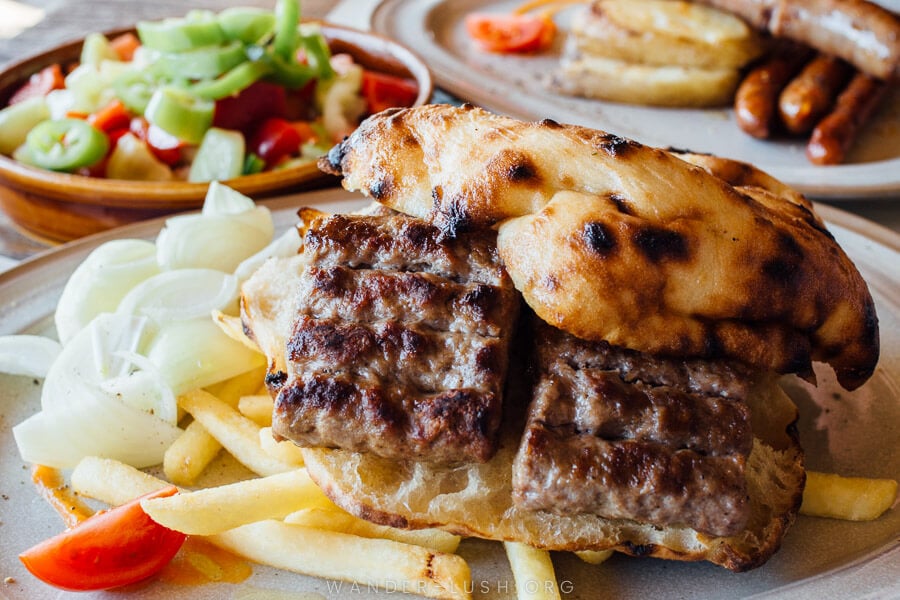
Most restaurants allow you to specify how many cevapi you want. A typical serving is 5-10 pieces.
Cevapi is always served with pita bread called somun or pitica, which is also dipped in broth and grilled, a heaping of chopped, raw white onion on the side, plus ajvar (red pepper paste) and/or kaymak (a soft cream cheese).
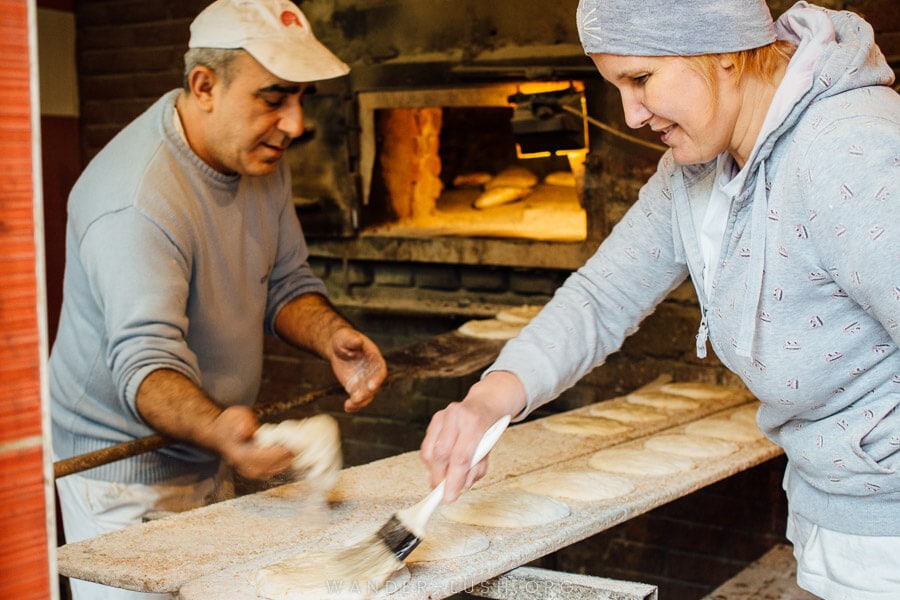
My favourite: In Sarajevo, you can find cevapi joints called Ćevabdžinica all along Bravadžiluk street near the Baščaršijska mosque. My favourite is Ćevabdžinica Mrkva. In Banja Luka, I recommend Restaurant Kazamat for the local version.
2. Burek & other types of pita (stuffed pies) – essential Bosnian food
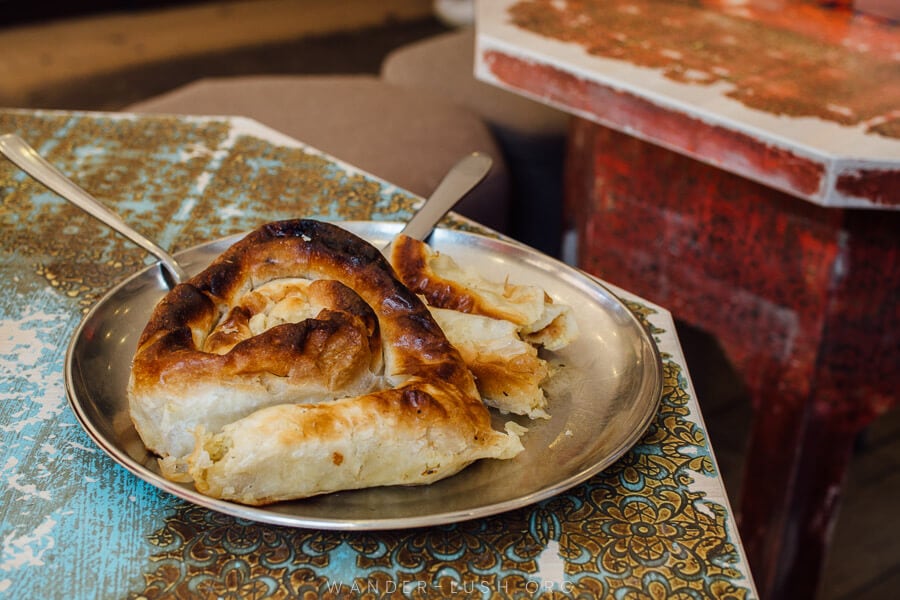
Introduced from Persia by way of Turkey, burek became a popular dish throughout the entire former Ottoman Empire and remains a go-to street food in Bosnia to this day. The first buregdžinica – a specialised bakery that exclusively prepares burek – opened in Sarajevo in the early 1460s. Sarajevans haven’t looked back since.
Burek is to Bosnia what pizza Napoletana is to Italians – that is, sacred stuff. Beyond their similar cultural value, the two share some other similarities: Both use a basic wheat dough and are oven-baked. Burek is not a pizza though – it’s a stuffed ‘pie’ filled with meat and coiled into a spiral shape. Burek is a type of pita. Vegetarian pitas are similar but the shape is different and the filling is meat-free.
Popular variations of pita include:
- Krumpiruša (potato pita)
- Tikvenjača (pumpkin pita)
- Sirnica (cheese pita)
- Zeljanica (spinach and cheese mixed pita)
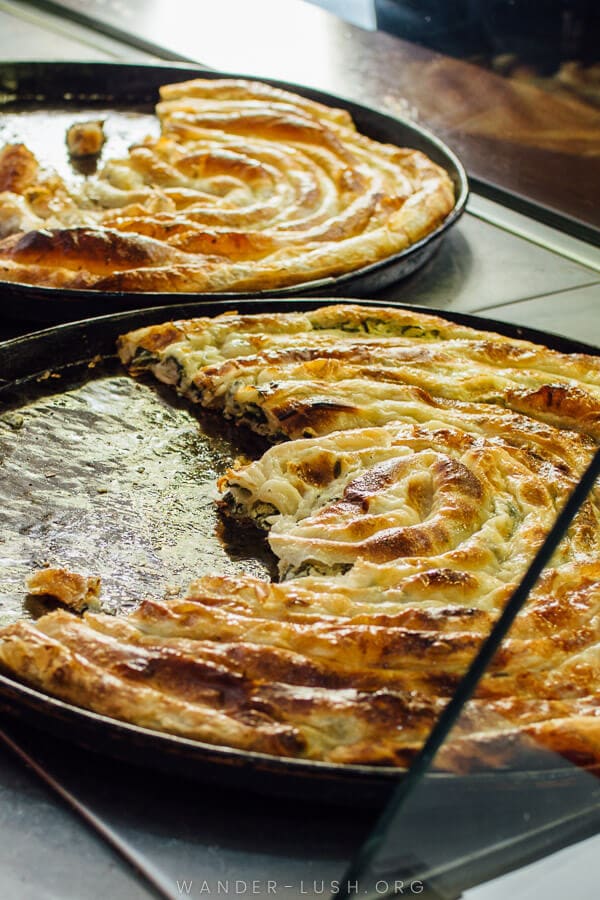
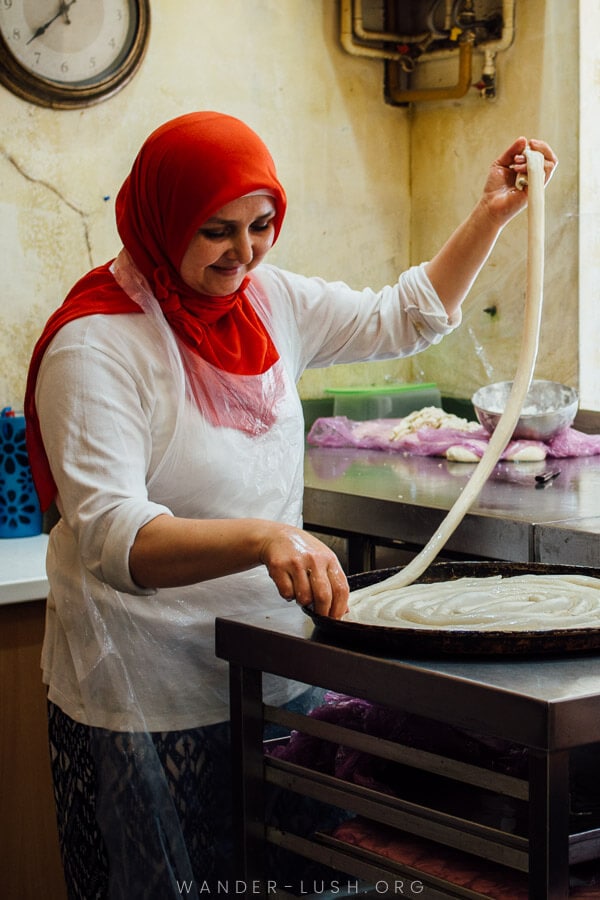
Flaky and greasy (usually in a good way), burek is traditionally a Thursday and Sunday breakfast dish but can be eaten any time, any day. Some bakeries serve a sweet version stuffed with sour cherry.
When you visit a buregdžinica, you order either by piece or by weight so you can easily try a combination of two or more varieties. Normally burek is served warm and paired with either sour cream or a glass of ayran drinking yogurt on the side.
My favourite: My top bureks in Sarajevo are served at Buregdžinica Oklagija, where these kitchen photos were taken, and at the super-popular Buregdžinica Bosna. Both are close to the Old Bazaar.
3. Dolma, sarma, punjena paprikas & japrak (stuffed vine leaves & vegetables)
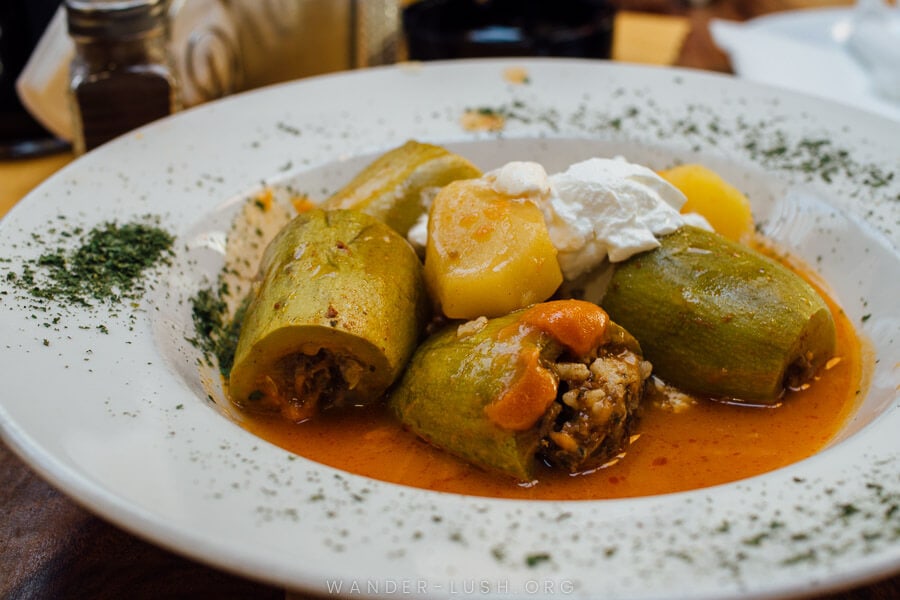
Stuffed vegetables are another staple of Bosnian food, particularly in regional areas where less meat is consumed. Every restaurant menu in Sarajevo features at least a few options from this family, including:
- Punjena paprika (stuffed bell peppers)
- Sogan dolma (stuffed onions)
- Sarma (meat and rice stuffed inside pickled cabbage leaves)
- Japrak (stuffed vine leaves)
Eggplant, zucchini and other vegetables also get the dolma treatment. (If it can be stuffed, it will be.) Normally the filling is a blend of minced meat and spiced rice, but plain old ‘dolma’ is normally vegetarian-friendly and filled with rice only.
Sogan dolma, a specialty in Mostar, is my personal favourite. After the meat and rice filling is placed inside the onion, it’s cooked in a pot for about 20 minutes then served dressed in its own gravy. Yum.
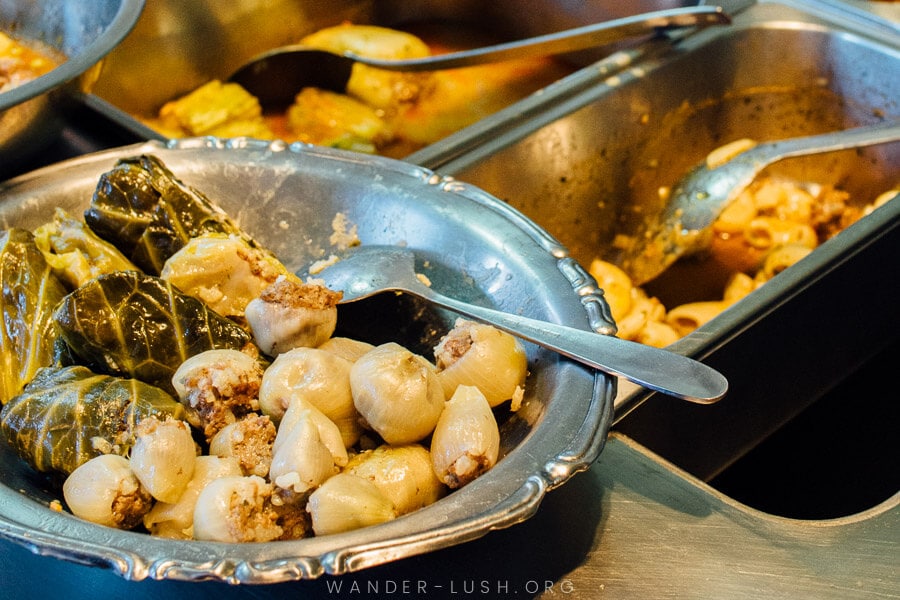
Punjena paprika (stuffed bell peppers) are the most ubiquitous and for this reason, you’ll often see red peppers growing in home gardens. Smaller, sweeter peppers are preferred. In the past, this dish was prepared in the villages on a wood-fired stove or in garden ovens made of yellow clay.
Meat dolma are served warm with a citrus sauce while rice-only dolma are topped with yogurt and garlic and served at room temperature.
My favourite: The best sogan dolma and stuffed peppers I ate were at Barhana restaurant in Sarajevo.
4. Begova corba (chicken & veg soup)
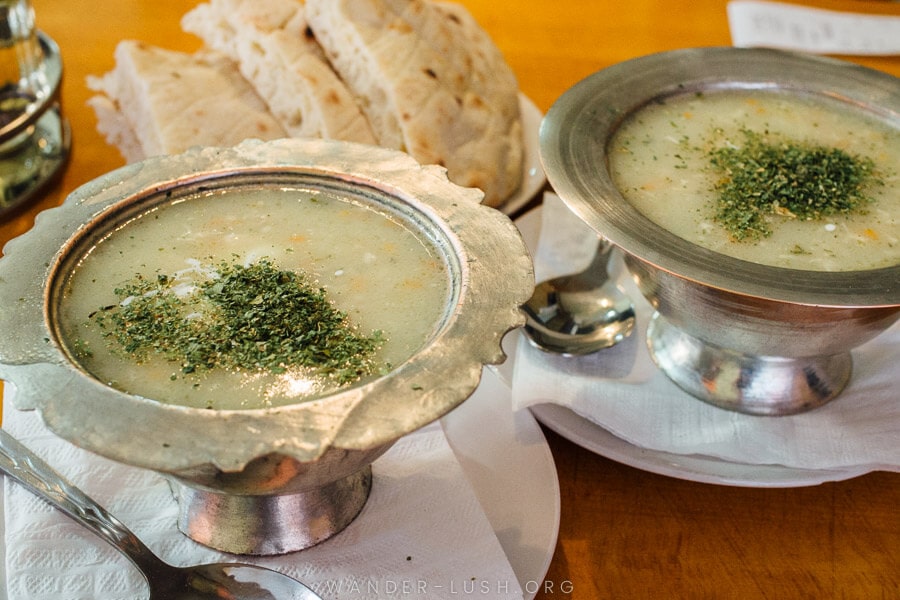
Begova čorba (‘Bey’s soup’ or ‘Bey’s stew’) is another Ottoman import that Bosnians have made their own. A staple during the winter season, it’s a nutritious soup of chicken, dried okra and various vegetables, including celery and carrots. Like all good things, it’s cooked slowly over a low heat.
Depending on the restaurant, begova čcorba might be served in a metal bowl or clay pot with a dollop of sour cream or a sprinkle of dried herbs on top.
My favourite: In Sarajevo, canteen-style ASDŽ Aščinica was my go-to for an easy lunch of begova corba and fresh bread.
5. Bosanski lonac (meat & veg stew)
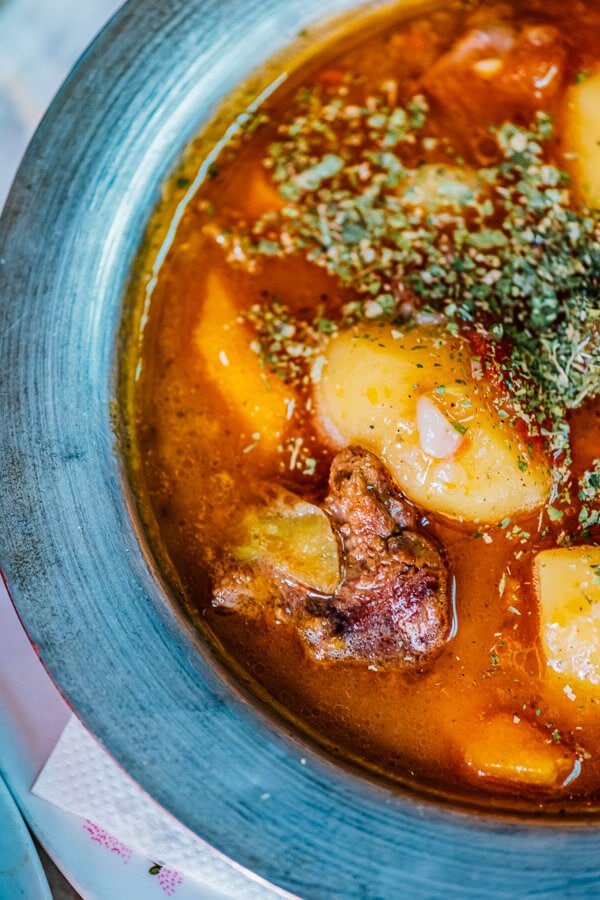
Bosnia’s national dish, Bosanski lonac or ‘Bosnian pot’, is typical of all meat dishes in that it’s cooked long and slow over a low heat. Traditionally prepared with beef and different seasonal vegetables, it may include cauliflower, potatoes, tomatoes, carrots, parsley, garlic and/or peppers.
Five-plus hours of gentle simmering makes the meat very tender and full of flavour. Traditionally Bosanski lonac is prepared in a ceramic or stoneware pot, with the cook layering big chunks of meat and vegetables in tiers. A few tablespoons of white wine are sometimes added during the cooking process.
6. Rostilj (mixed BBQ)
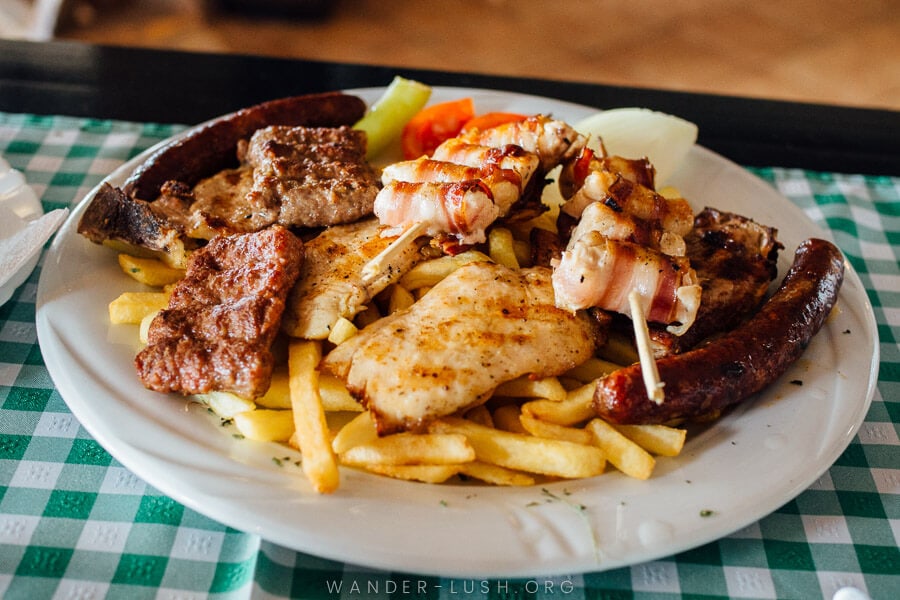
One for the meat lovers, rostilj or mixed grill is a fixture on most menus and a safe choice if you aren’t sure what to order. The protein-heavy platter normally features cevapi, sudzuk beef sausages, steak and/or grilled chicken, plus french fries or baked potatoes and a bit of salad or slaw.
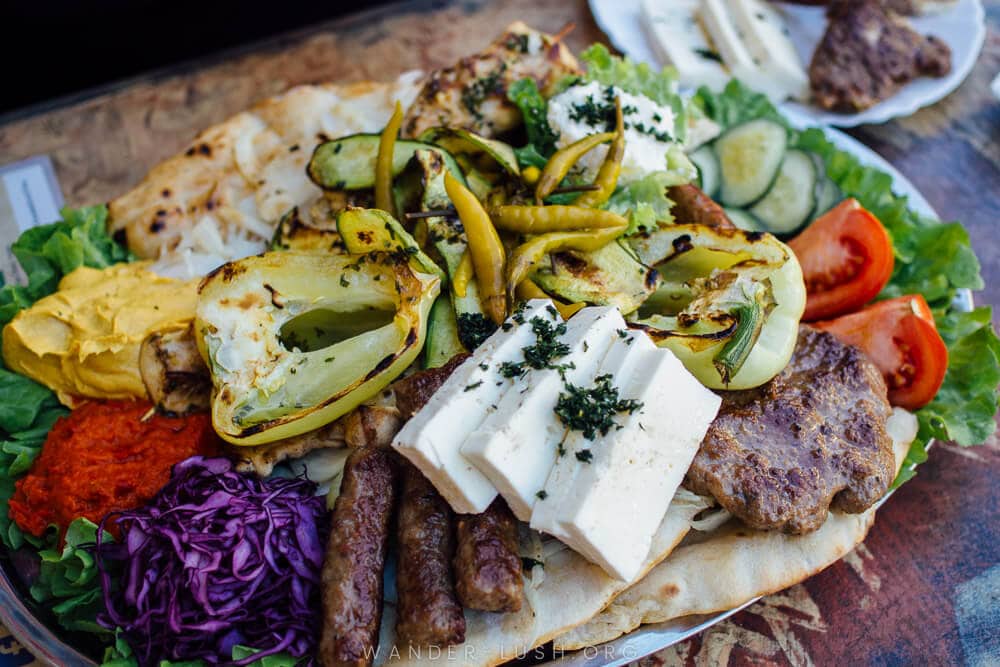
If you’re after something less meat-sweat-inducing, another popular technique for preparing meat in Bosnia is meso ispod sača (‘meat under sač’). Basically it’s lamb or veal cooked beneath a metal or earthenware lid with hot coals and ashes heaped on top.
My favourite: Looking back at my photos of Bosnia, rostilj was our most-ordered meal by far (I blame my husband for that!). The most delicious spread we had – the one with colourful pickled cabbage, chillies and grilled veggies (pictured) – was at Tima – Irma in Mostar.
7. Tarhana (creamy vegetable soup)
Another dish that Bosnians look for during the cold winter months, tarhana soup is thick, luscious and nutrient-rich. Some consider it the original ‘instant soup’. It can be eaten at any time of day, including for breakfast.
Tarhana has its roots in Central Anatolia and there are many different varieties eaten in Turkey and the Balkans today. Although there are regional differences, the main ingredients are usually flour and grain, yogurt, onions, tomatoes, red peppers, green peppers, mint, salt and spices.
8. Grah (bean soup)
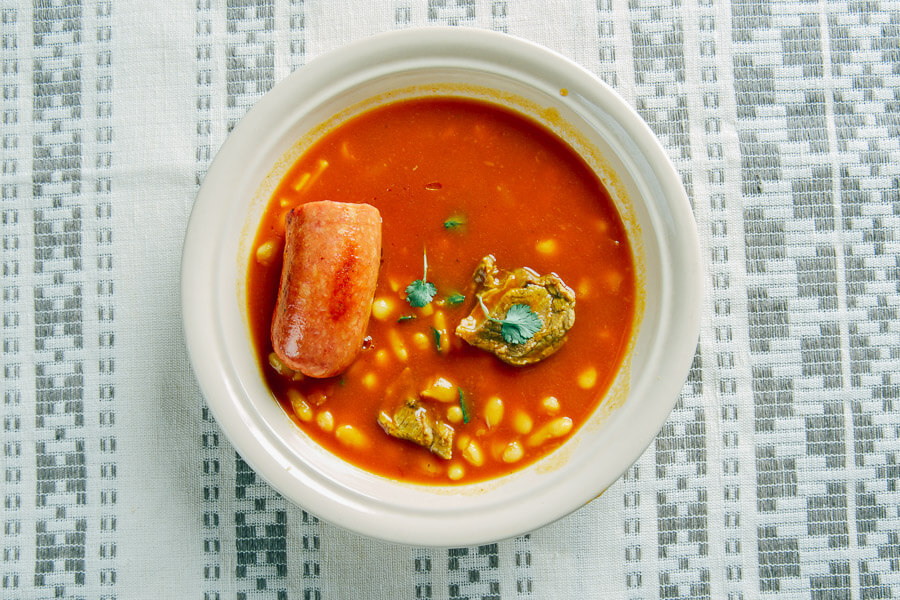
Beans are widely used in the kitchen in Bosnia and Herzegovina including for grah, another thick and flavourful soup. This one is made by boiling Peruano beans with onions, carrots, peppers and sometimes a hunk of slow-cooked beef.
Served in a clay bowl, it’s normally paired with rice or bread depending on one’s preference.
9. Meza (mixed appetiser platter)
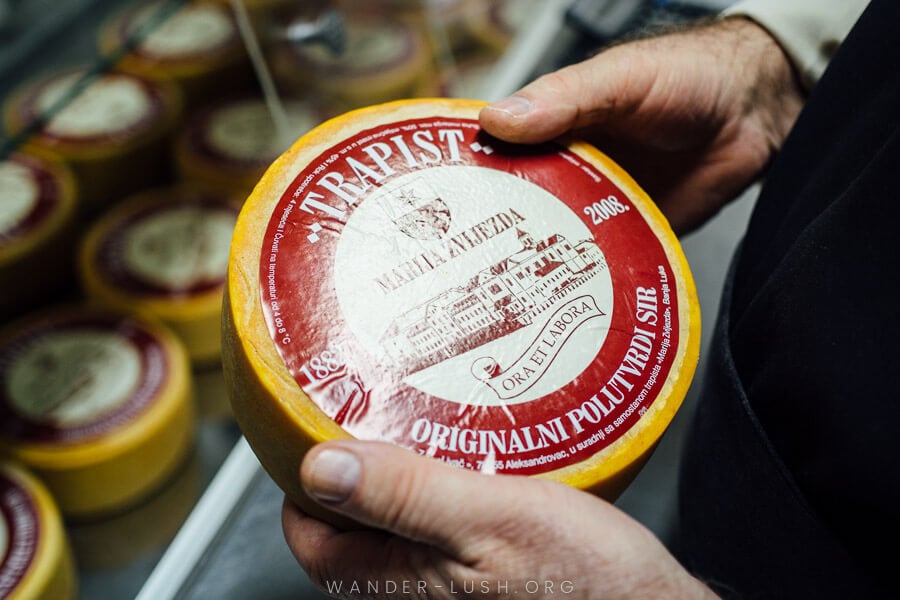
Like Turkish or Greek meze, Bosnian meza is a cold platter typically eaten at the start of a meal or as a shared snack with drinks. A spread might include dried beef (pastrami) and suho meso (cured meat similar to Italian bresaola) along with hard and soft cow’s, goat’s and sheep’s milk cheeses.
Sometimes called Bosanska plata, mezas are always present at dinners where alcohol is served. (You need something to soak up that rakija!) More substantial versions might incorporate sliced melon, grilled vegetables or savoury uštipci (fried dough balls).
My favourite: The Singing Nettle in Sarajevo does beautiful meza platters with local and seasonal vegetables.
10. Klepe (filled dumplings)
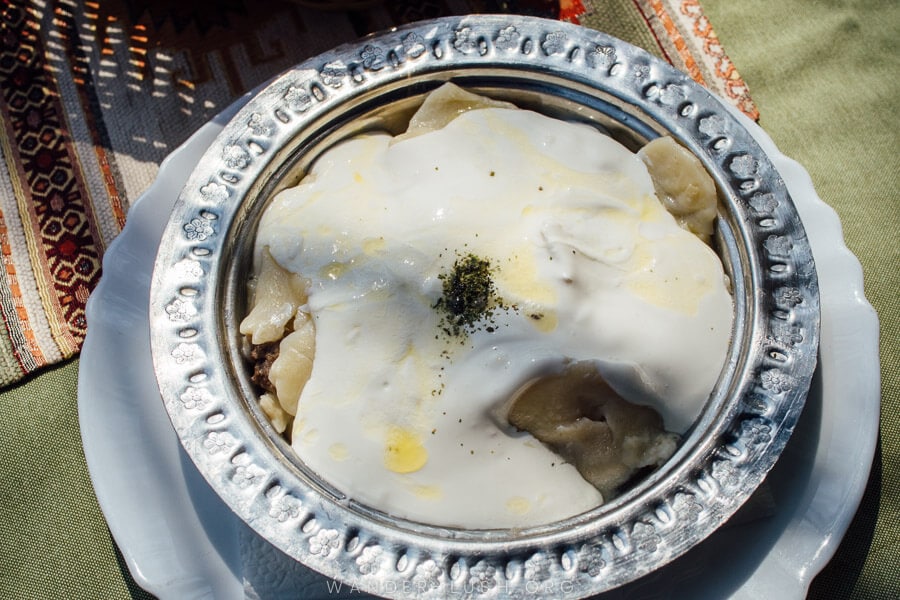
Bosnia’s answer to ravioli, klepe are small and soft steamed dumplings with a simple filling of seasoned minced meat (lamb or beef) and onion. A cheese version is available in some restaurants.
Originally a humble peasant dish, today klepe is a popular food eaten all over the country. The silky dumplings are served swimming in a delicious garlic and yogurt sauce. They are extremely moorish, take it from me.
My favourite: I waited until Mostar to try my first klepe – the dumplings at Restaurant Šadrvan were absolutely delicious!
11. Cutfe (meatballs in tomato gravy)
Cufte meatballs are thought to have originated in the kitchen of the Ottoman palace before the recipe filtered its way down to the masses throughout Central Asia, Mesopotamia – and Bosnia and Herzegovina. The name means ‘crushed meat’, and the dish is that simple. Chopped onion and herbs might be added to the beef mix for extra flavour.
The real hero of this dish is the thick, flavourful tomato sauce the cufte are submerged in. Soak it up with a slab of bread or a scoop of mashed potato – this is the ultimate home-style comfort food.
12. Djuvec (vegetarian rice)
I was surprised to find that rice is a staple in Bosnia. Sometimes it’s served plain to accompany meat, other times it’s enriched with various vegetables and eaten alone. Djuvec is a perfect example of why meat-free diners don’t have to worry about compromising on flavour: Many vegetable-based foods in Bosnia use a similar slow cooking technique to bring out a deep, hearty taste.
Djuvec takes its name from the round clay pot it’s cooked in, which gives it a deep flavour and crispy bits around the edge. It takes around two hours to prepare this dish properly, but it’s worth the wait.
Traditional Bosnian desserts
Sweet tooths will be glad to learn that Bosnia has an array of desserts and afternoon tea treats on offer. Here are four of my favourites.
14. Bosnian baklava
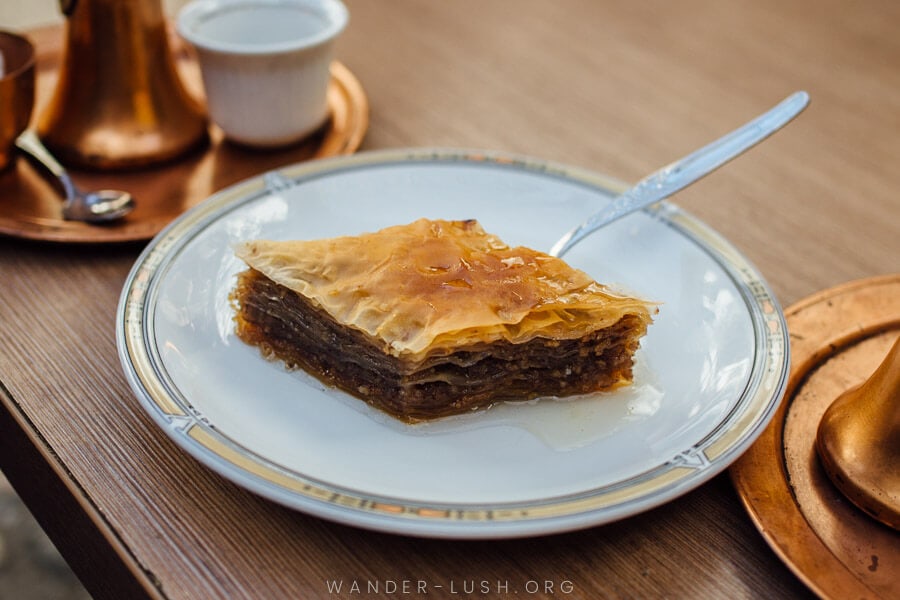
Baklava has a very important place in Bosnian culinary culture and is often eaten for special occasions such as weddings and holidays. As with Turkish and Azerbaijani versions, it’s made by layering filo pastry with crushed nuts (usually walnuts or pistachios), honey and an ungodly amount of sugar syrup.
In Bosnia, you’ll often see people eating a diamond-shaped slice of baklava with their coffee. The version eaten throughout the Balkans region has its roots in Bosnia.
My favourite: Baklava Shop Sarajevo near the mosque sells a huge range of beautifully presented baklavas.
14. Tufahija (baked apple)
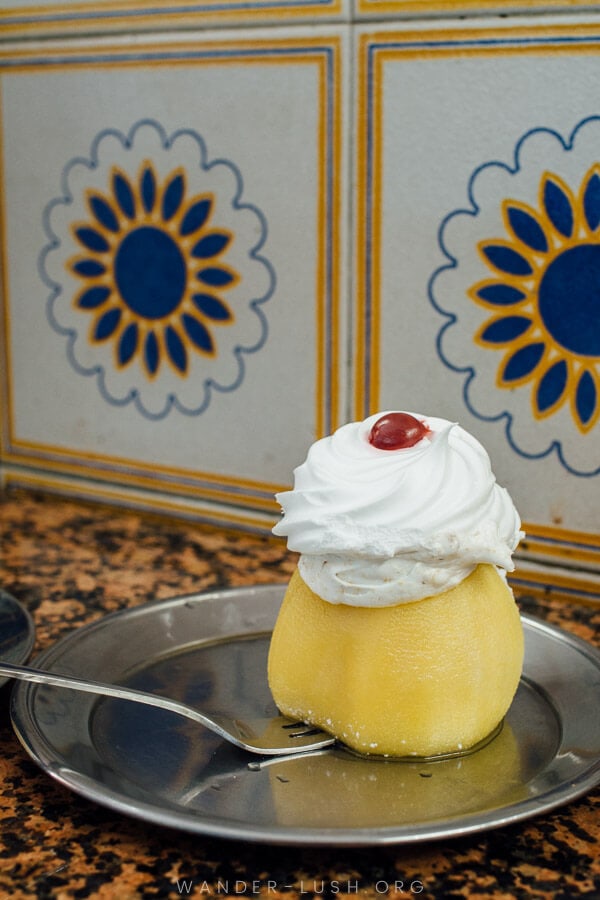
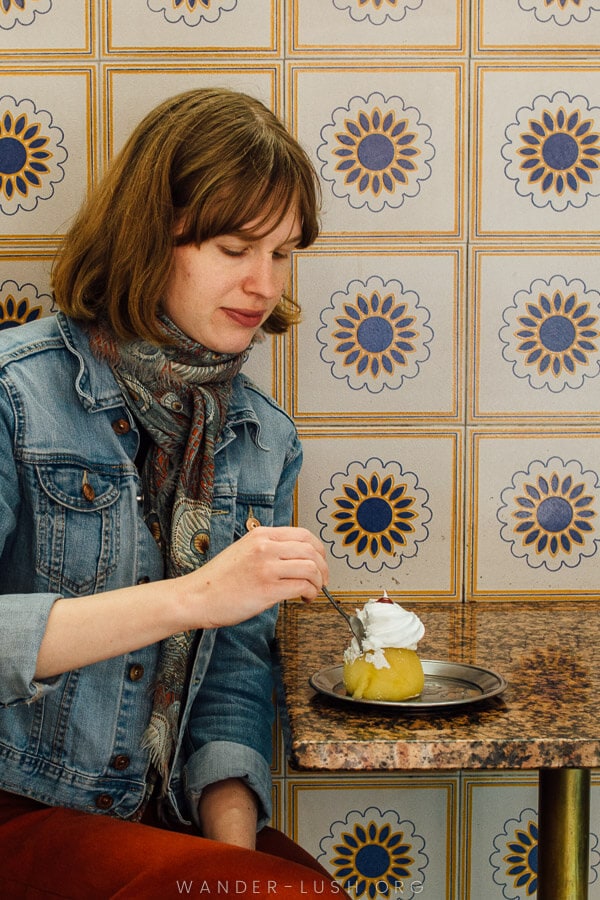
Tufahija is a Persian-Ottoman dessert with an Arabic-derived name – ‘tuffàh’ meaning apple. It’s made by stewing a whole, cored apple until soft then filling it with chopped walnuts and topping it off with cream.
Drowned in sugar syrup, tufahija is saccharine sweet and also pairs very well with bitter Bosnian coffee as a result.
My favourite: I really enjoyed the tufahija at Slastičarna Egipat (pictured), a delightfully retro, family run dessert shop near Sacred Heart Cathedral in Sarajevo.
15. Hurmasice (shortbread with syrup)
This dessert is just as easy to come by as baklava. Similarly syrupy, hurmašice is essentially a pasty made from a basic dough of margarine, flour, yogurt, oil, eggs, baking powder and walnut kernels.
Once baked, the fingers are drenched in a syrup made from powdered sugar, water and lemon juice. Of course they are.
16. Ustipci (fried donuts)
While salty ustipci (sometimes called peksimeti in Bosnia) are eaten with savoury meza boards, the sweet version is a common dessert or morning nibble to accompany your breakfast tea. In this instance, the dough balls are filled with fruit jam or honey and dusted with icing sugar, or left unfilled and served with cream or Nutella on the side.
You can find iterations of this sweet treat all across the Balkans, including in Slovenia where they’re called miške. I first tried them in Skopje and fell a little bit in love.
Traditional Bosnian drinks
Here are four alcoholic and nonalcoholic beverages that Bosnia is known for.
17. Bosanska kahva (Bosnian coffee)
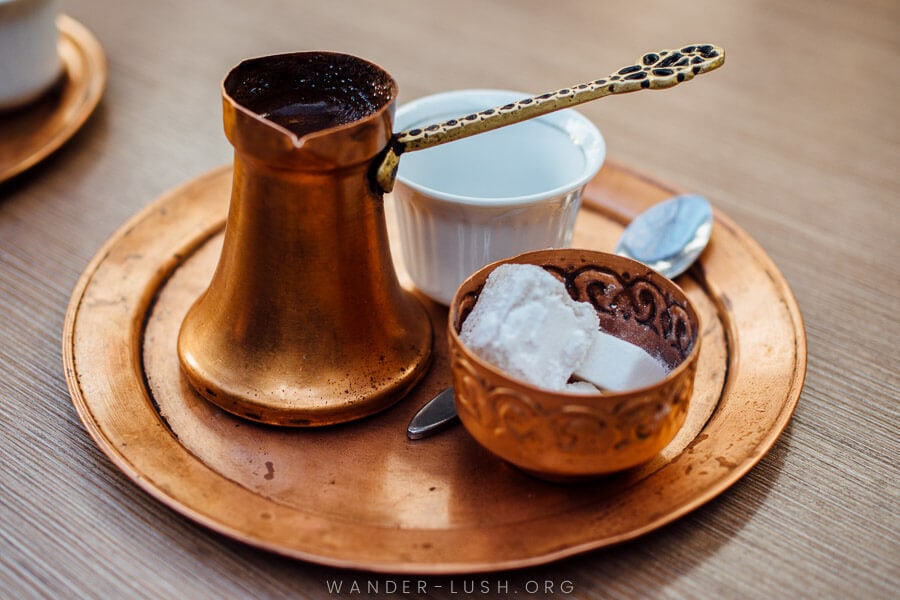
Bosnia is synonymous with coffee culture. Even though Bosanska kahva, the national brew, has Ottoman origins, it’s a distinct tradition in Bosnia with its own accoutrements, preparation techniques and drinking rituals. Whatever you do, don’t call it Turkish coffee!
Roasted and ground beans are placed in a džezva, a special metal pot with a long handle that holds a single serve of coffee. Before it reaches your cafe table, the dzezva is placed on a beautiful etched bronze tray along with a ceramic cup called a fildžan filled with hot water, a bowl of sugar cubes, and a small glass of room-temperature water.
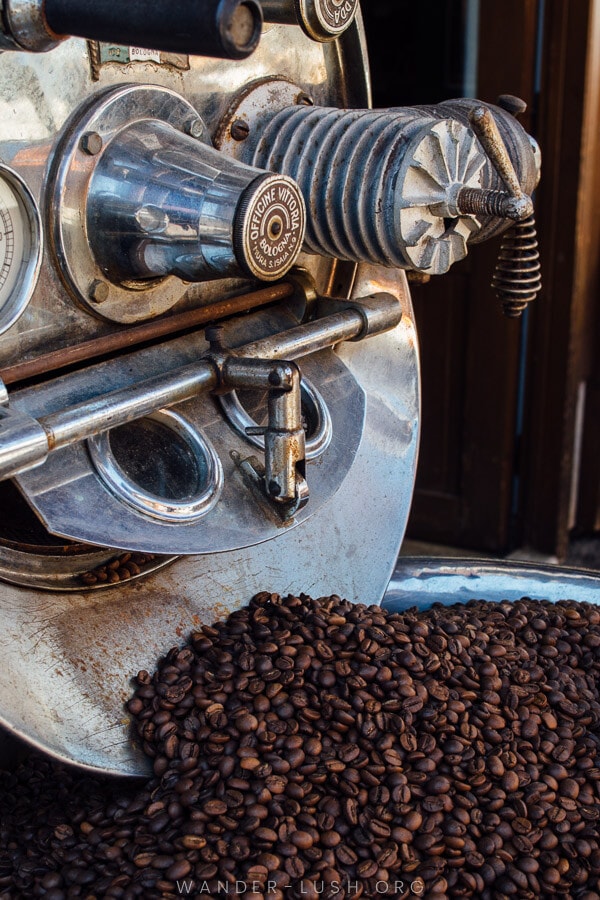
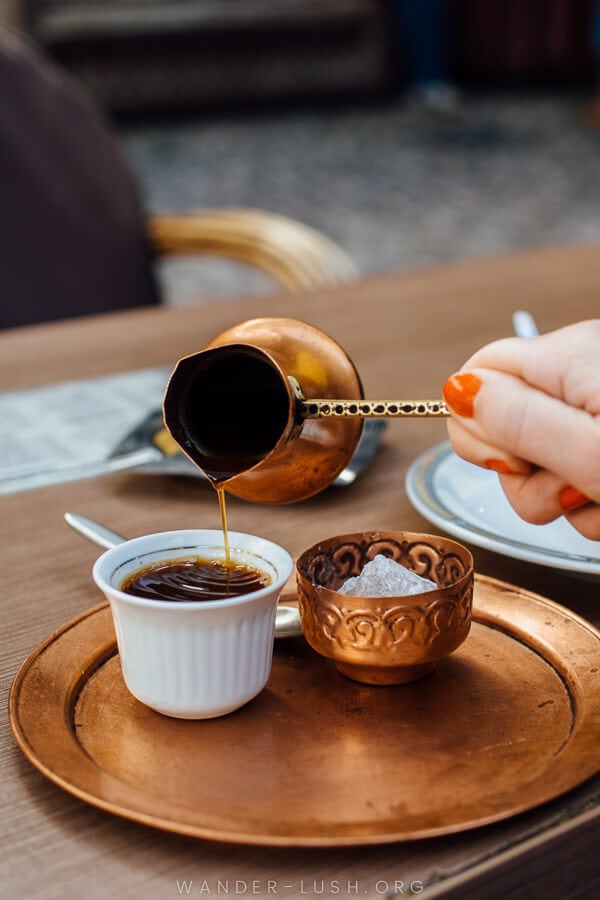
There is a particular way to drink Bosnian coffee: First, pour it into the cup (some people use their spoon to scoop out the foam), then take a sugar cube and dip it into the coffee so that it softens along the edge. Nibble the sugar or rub it on your tongue, then take a sip of coffee. The sugar offsets the bitterness and mellows and the flavour. This process is repeated for each sip, with a gulp of plain water in between to cleanse the palate.
If you don’t fancy chomping on a sugar cube, take a small bite of lokum (Turkish Delight) or a nibble of baklava instead.
My favourite: Ministry of Ćejf is one of Sarajevo’s most popular coffee shops that serves kahva the traditional way. I also enjoyed Caffe Divan inside the Silk Road-era Morića Han.
18. Salep tea
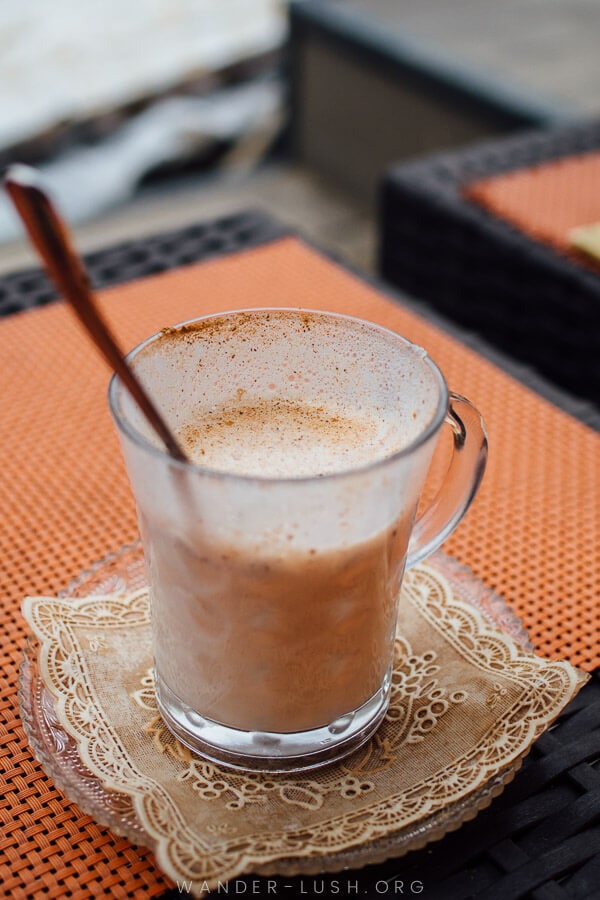
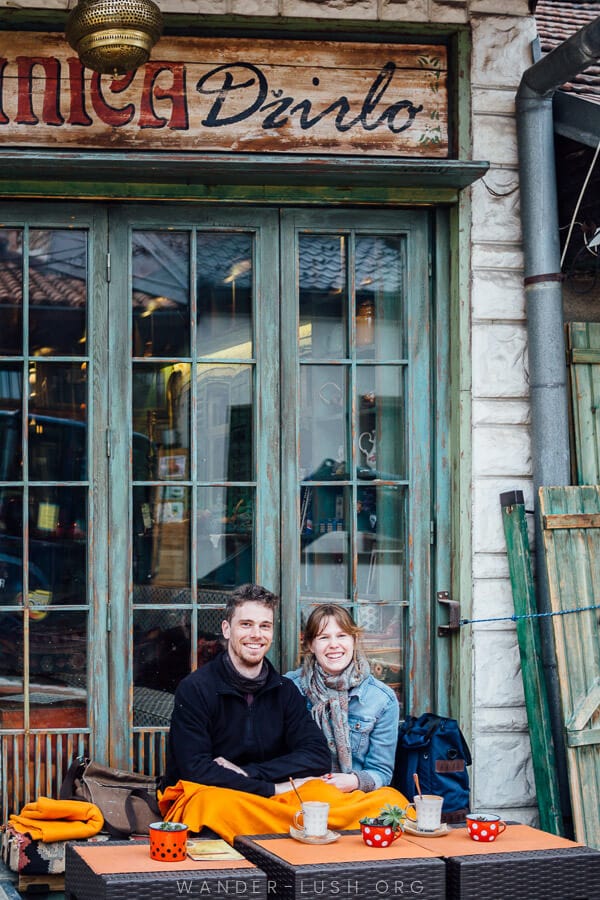
While Bosnia is mainly about the coffee, the country accommodates tea drinkers too! Salep is an unusual beverage that I tried for the first time in Sarajevo. The name comes from a special kind of flour made from the tubers of particular orchid species. It has many different uses throughout Turkey and the Islamic world, but in Bosnia and Herzegovina, it’s used for a warm winter beverage known as Salep tea.
Combined with milk, sugar and spices such as cinnamon and nutmeg (sometimes rosewater), the thick, white, foamy beverage is sweet and heart-warming. It’s almost like chai tea. I later learned the orchid it’s made from is now endangered – I feel bad about ordering so many cups.
My favourite: In the 19th century, you could purchase a glass of Salep from a salebdžije, hawkers who roamed the streets of Sarajevo dispensing the drink from portable containers. Today you can find it on the menu at the famous Teahouse Džirlo (pictured) and a few other traditional cafes in Sarajevo.
19. Bosnian beer
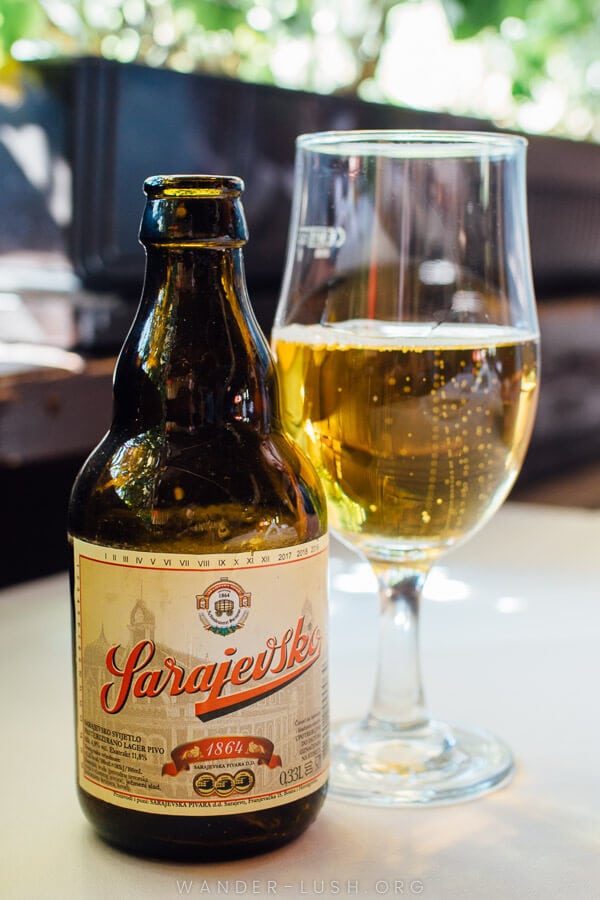
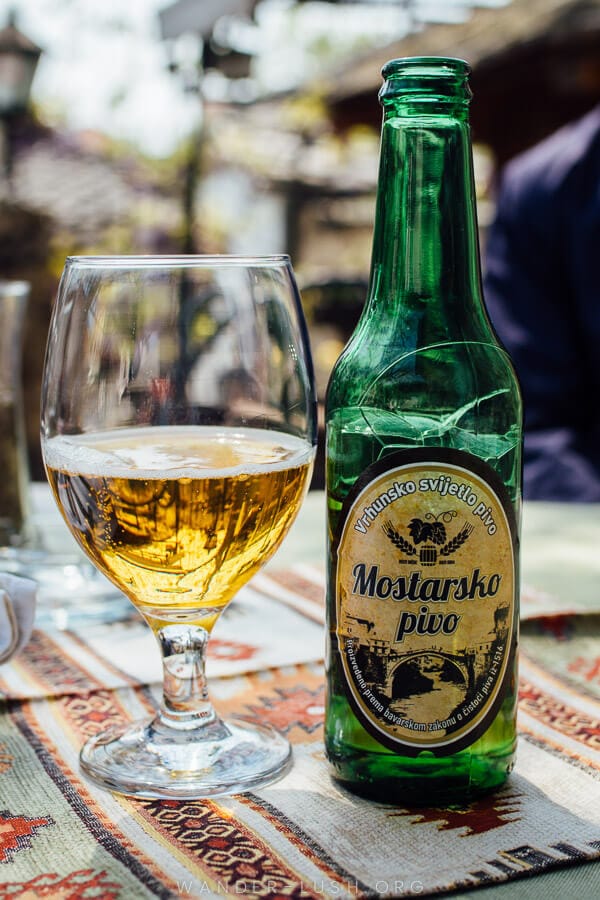
Bosnia has an emerging wine scene, but the country’s beer economy is already well-developed with half a dozen large-scale breweries and lots more craft operations around the country. The biggest is Sarajevska pivara, which has been churning out amber ales for Sarajevans since 1864.
Tuzla, Bihac, Banja Luka, Mostar and Foca all have their own breweries and beer brands. Be sure to order the local drop when you’re travelling around the country – some are uniquely made on local spring water.
20. Rakija & medovina (Bosnian spirits)

Rakija fruit brandy is just as popular in Bosnia and Herzegovina as it is in other countries throughout the region. Because so many exotic fruits grow in the Drina River Valley, Bosnia has its own fruit bowl on hand to produce a myriad of different flavours. My favourite is definitely dunjevača, a 40% proof spirit distilled from ripe quinces and served ice-cold.
Medovina (mead) is usually a bit milder. It’s distilled from fermented honey and sometimes flavoured with complementary fruits.
Bosnian cuisine FAQ
Is Bosnian cuisine vegetarian friendly?
Many meals are naturally meat-free – including djuvec rice, meat-free dolma, and several of the Bosnian soups mentioned on this list. In addition, most restaurants offer a big salad menu. Grilled vegetables are always available as a side dish.
Other vegetarian-friendly Bosnian foods include grašak (pea stew), kljukuša (grated baked potatoes), sataraš (bell peppers, eggplants and tomatoes) and turšija (pickled vegetables).
What to eat for breakfast in Bosnia?
Bosnia doesn’t have a lavish breakfast spread like Turkey does: Instead, the first meal of the day (usually eaten mid-morning) is a more pared-back affair. In parts of rural Bosnia, breakfast or u ina consists of bread, cheese and jam eaten with coffee. In the cities, you might also be served eggs, palačinke (thin crepes) or sweet ustipci.
If you ask me, the best breakfast is a plate of fresh burek and a glass of ayran yogurt! Most burek shops open early at 7am or 8am.
Visiting Bosnia during Ramadan – do Bosnians fast?
Bosnians who follow Islam observe a month of fasting for Ramadan. This usually happens in early spring, between March and April. For 30 days, people limit themselves to two meals: Sehur, a simple meal eaten before dawn, and iftar, a more elaborate meal eaten after sunset.
If you happen to be visiting Bosnia and Herzegovina during Ramadan, don’t worry – most cafes and restaurants remain open throughout the day to cater to non-Muslim locals and visitors.
There are a few special food traditions to look out for during Ramadan. For example, somun bread is often sprinkled with a special black seed called habbatul barakah to symbolise good luck. Aid, the celebration after Ramadan, brings lots of rich foods and special desserts.
Prijatno! Enjoy your meal! Do you have any additional Bosnian food items that I should add to the list?
Thank you, Emily,
I too live in Australia and am now feeling home-sick, or more like home-food-sick.
The debate about ‘burek’ vs ‘pita’ is sooo Bosnian, we are made fun of for insisting that burek is meat-filled, and the rest of fillings are reserved for ‘pita’. It is how they will recognise you as Bosnian in the neighbouring countries.
I hope you enjoyed Bosnia.
Tamara
Great tip! Thanks Tamara!
Thank you for this amazing article, it’s making me home sick already.
I was born in Bosnia but live in Australia now.
I just wanted to offer a small but important correction about burek & pita.
Burek is actually a type of pita, just like krompiruša. The difference is that burek is a meat-pita and krompiruša is a potato-pita.
This is commonly misunderstood and even in other Balkan countries.
Next time you are eating burek, you’re having pita filled with meat
Thank you
Amina
Thanks Amina, I did know that but maybe I didn’t make it clear. I have made a small amendment.
Glad you enjoyed the post!